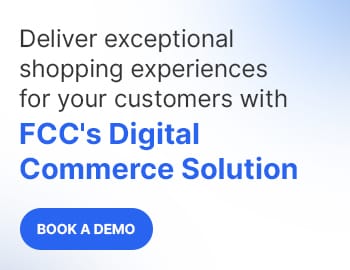Table of Contents
- What Is Ecommerce Personalization?
- Benefits Of Personalization In E-Commerce
- Challenges Of Personalization In E-Commerce
- E-Commerce Personalization Examples
- What Is The Difference Between Personalization And Customization?
- Conclusion
What is Ecommerce Personalization?
E-commerce personalization is the strategic use of data to create tailored shopping experiences as per the individual needs of website visitors. By analyzing customer behavior, preferences, and purchase history, businesses can deliver highly relevant and contextual interactions across various channels. This includes personalized product recommendations, targeted email marketing campaigns, dynamic website content, and curated customer service.
Personalization is a powerful tool for retailers seeking to engage loyal customers, increase repeat purchases, and drive sales. By offering a more personalized experience, businesses can foster stronger customer relationships and achieve long-term growth.
Benefits Of Personalization In E-Commerce
Here are the key benefits that ecommerce personalization offers:
-
Improved Sales and Revenue: Personalization increases the likelihood of a sale by helping customers find exactly what they need. A personalized ecommerce website has a lower bounce rate as it matches the shopper's location in terms of language, currency, and shipping costs. Relevant query suggestions and complementary products help guide customers to items that enhance their shopping journey.
-
Data-Driven Insights: First-party data provides insights into customer needs, purchasing habits, and motivations. These insights help online retailers improve personalization strategies and make informed decisions on which product lines to enhance or discontinue on their ecommerce platform.
-
Stronger Customer Relationships: The best loyalty programs offer personalized rewards rather than simple points redemption. Customers interested in specific product lines should receive rewards within that category, encouraging higher engagement and retention.
-
Market Leadership: In competitive ecommerce segments, personalized shopping experiences set retailers apart. Using targeted offers when customers have purchase intent enhances the brand's position against competitors and creates a positive first impression.
-
Higher Customer Satisfaction: Curated product suggestions, promotions, and offers help customers narrow down their choices. A well-designed website experience with filtering options and custom recommendations caters to different demographics and reduces decision fatigue.
Challenges Of Personalization In E-Commerce
Here are the challenges that an ecommerce business can face with successful personalization:
-
Data Management: Collecting, integrating, and synthesizing personal data is a significant challenge in personalization. Retailers must handle vast amounts of personal information, ensuring its accuracy, relevance, and timeliness for an effective ecommerce experience.
-
Privacy Concerns: With increasing data privacy regulations, retailers must navigate legal and ethical considerations while using customer data for personalization. This helps ensure compliance with GDPR, CCPA, and other privacy laws.
-
Scalability: Scaling the personalization process to accommodate a larger customer base without compromising the user experience can be a complex proposition. Finding the right way to balance personalization and scalability may require significant investment in ongoing testing.
-
Technological Integration: Implementing personalization requires advanced ecommerce personalization tools and seamless integration with existing systems. This process is complex, resource-intensive, and requires significant investments in both time and expertise.
E-Commerce Personalization Examples
Here are some ecommerce personalization examples showing how an effective strategy can create an engaging user experience:
-
Netflix: Netflix uses personalization to recommend content based on user behavior, preferences, and viewing history. This data-driven approach keeps users engaged, increases retention, and ensures a tailored viewing experience.
-
Spotify: Spotify offers personalized playlists and music recommendations based on listening habits. This helps ensure that users discover new songs and artists they love, which enhances user satisfaction and loyalty.
-
Nike: Nike's online store provides personalized product recommendations and curated collections based on user preferences and past purchases. This helps improve the customer experience and encourages repeat business.
-
Zara: Zara uses its ecommerce personalization strategy to offer tailored promotions and product suggestions, helping customers find items that match their style and preferences. These personalization efforts help improve customer satisfaction and boost sales across different product pages.
What Is The Difference Between Personalization And Customization?
While personalization and customization are often used interchangeably, they are distinct concepts. Personalization involves using data and insights to create a unique and tailored experience for each individual customer. This can include personalized recommendations, content, and messaging based on the customer's behavior, preferences, and demographics. For example, Prime Video uses personalization to recommend content based on user viewing history.
On the other hand, customization refers to the process of creating a product or service to meet specific requirements or preferences of an individual or group. This typically involves choosing from a set of predetermined options to tailor the product to per customer's needs. For instance, when new customers sign up for Prime Video, they can customize their account by selecting a few shows they like, and the platform customizes the user's account based on those choices.
Conclusion
E-commerce personalization tailors shopping experiences to existing and potential customers by leveraging data and insights. This approach enhances user engagement, increases conversion rates, and boosts customer loyalty. Effective personalization uses real-time, first-party data to deliver relevant content, product recommendations, and promotions. By understanding and meeting customer preferences, businesses can create seamless, engaging, and highly individualized shopping journeys, driving growth and maintaining a competitive edge in the market.
FAQ
E-commerce customization allows customers to tailor products to their specific preferences and needs. This process involves selecting from a range of options, such as colors, designs, and features, to create a unique product. Unlike personalization, which is done for the user, customization is done by the user. This approach enhances customer satisfaction and loyalty by offering a more personalized shopping experience.
Hyper-personalization in e-commerce is an advanced marketing strategy that uses real-time data, AI, and machine learning to deliver highly individualized experiences to customers. This powerful personalization tactic leverages extensive data points, including demographics, past interactions, real-time behavior, and contextual factors like location and weather.
Hyper-personalization ensures that every touchpoint, from product recommendations to marketing messages, is tailored to each user's specific preferences. This helps with making customers feel valued and understood.
E-commerce personalization enhances the shopping experience by delivering tailored content, product recommendations, and offers based on individual customer preferences. This approach makes it easier for customers to find relevant products, reduces decision fatigue, and creates a more engaging and satisfying shopping journey. By leveraging data and advanced technologies, retailers can provide customized interactions that meet user expectations.
Data analytics and AI can enhance e-commerce personalization by analyzing customer preferences and interactions in real time. By analyzing vast customer data, retailers can uncover patterns and preferences to deliver custom experiences. AI-powered recommendation engines suggest relevant products, while personalized marketing campaigns target specific customer segments. Dynamic pricing strategies optimize pricing based on individual behavior, and AI-driven chatbots offer personalized assistance in real-time.

